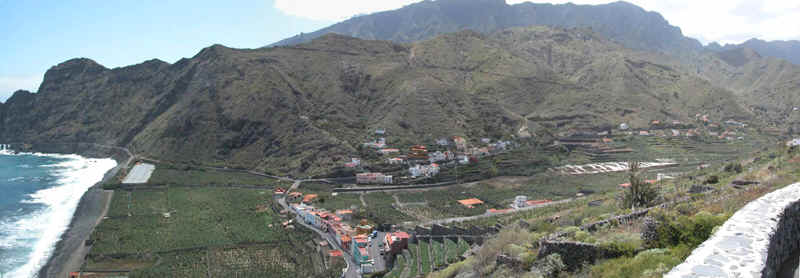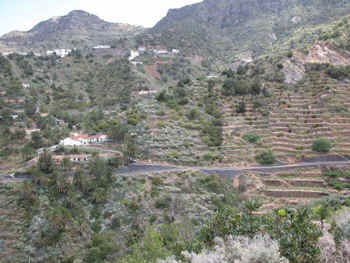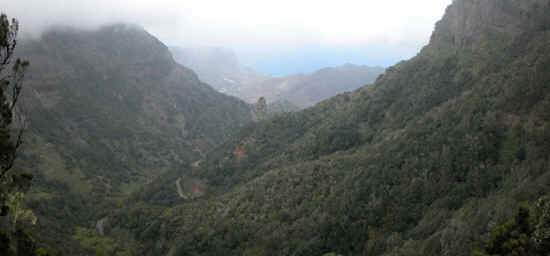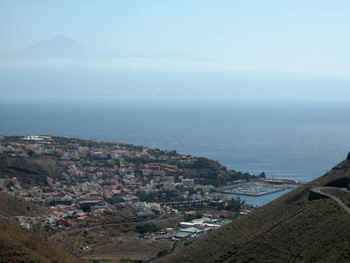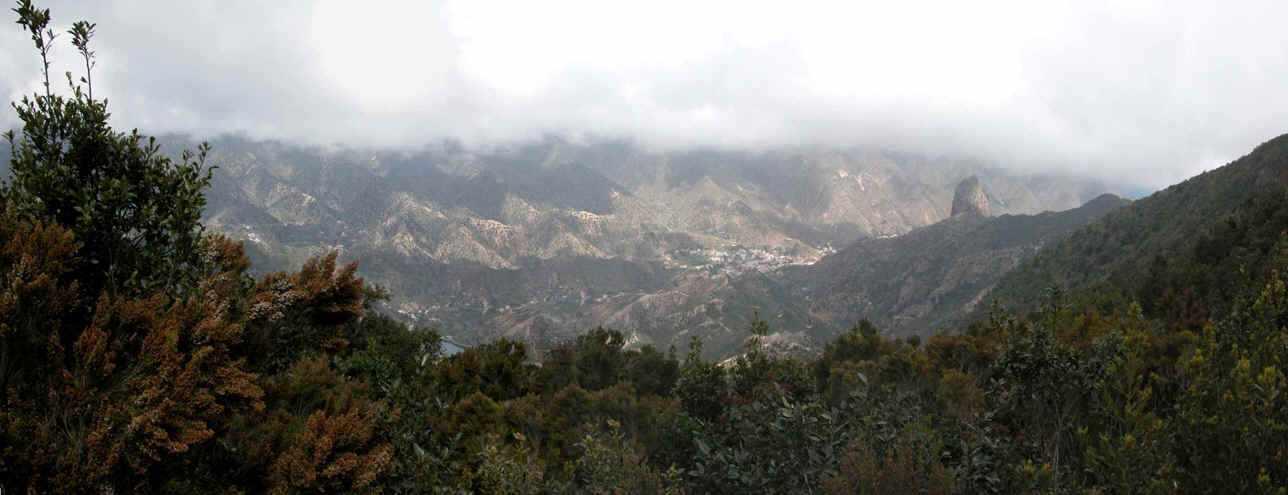
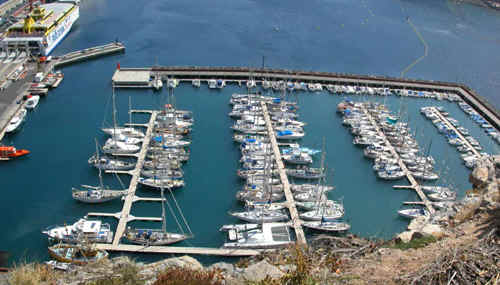 |
In the end, we crossed to La
Gomera, to discover that this was, by a very long way, the loveliest of
the Canary islands that we had visited. San Sebastian has a
charming, secure marina with dramatic cliffs on one side and mountain
scenery on the other. There is a small beach around the corner if
you wish to swim/sunbathe and transport is easily available via ferries,
the local bus through the mountains (quite spectacular) or car hire.
The small town is outside the marina gates and feels like a real place in
spite of the tourists. The tourism is actually at quite a low level
compared to the other islands. Most only come over on the ferry for
the day, and the ones who do stay are generally more interested in walking
in the Garajonay National Park (another world heritage site), than
sunbathing or discos. There is a disco in San Sebastian, but it only
opens one night a week!
It's not the place to stay for the winter if you need to do any work, or need to do any serious shopping - everything would have to come from Tenerife, but if we'd known what it was like we could have probably found a way to spend a bit more time here and less in Santa Cruz. While here Barry attacked our new anchor with the angle grinder, hacksaw and welding equipment in an attempt to reshape the sides and help the 'digging in' problem. Time will tell - our next destination will be sandy, the Bruce works well in sand, so until we feel the need of some weight training on the foredeck, the new anchor is relegated to second place. |
| That so much variety of scenery
can be packed into such a small island is remarkable. The whole of
the upper island is a misty lichen-covered wood, the final
remnants of a huge forest that covered the whole Mediterranean region
during the Tertiary period, which is quite an awe-inspiring thought. Lower
down, every possible inch of mountain side has been terraced to make it
possible to farm, though sadly many of these terraces are now
overgrown. The ease with which food can now be imported makes them
non-viable, and also the young are leaving for the greater opportunity
offered by the bigger islands or the peninsular. Tourism is the
growth industry now. A mixed blessing, but the Gomerans are aware of
this and it seems that for the moment at least they have the balance about right. Oh, and there's "El Silbo" a whistling language, developed to overcome the difficulties of communicating across the mountainous terrain and unique to Gomera. This is also dying out (although still taught at school), the introduction of the mobile phone was its death knell, though you can now download a whistling ring tone that tells you in Silban to "answer the phone"! We've included a few pictures of the island, below - much better than words.
|
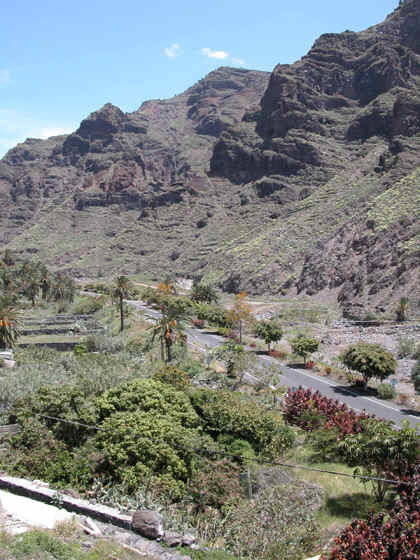 |
|
|
|
|
|
|
||
|
And finally, since there are many people we haven't seen for quite a long time, a couple of recent photo's. There's no way of knowing whether we'd be wearing better or worse if we were still in harness in the UK, but at least with this lifestyle we hardly ever have to remove our sunglasses!
|
||
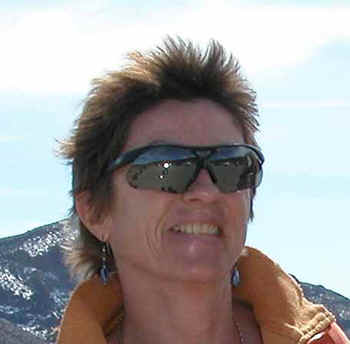 |
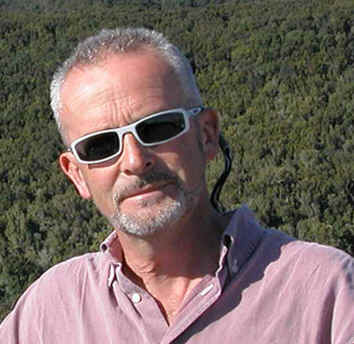 |
|
